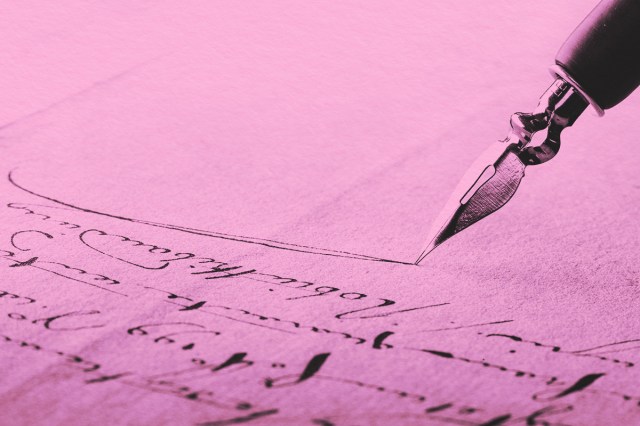
Someone who went to grade school before the 2000s can probably remember and describe learning how to write in cursive. They were likely instructed to practice looping the same letter over and over again on lined paper, which then would have been inspected for uniformity in size and shape. But students today often receive tablets instead of pencils, pens, and lined paper. Why has penmanship become a lost art, and why don’t we use cursive anymore?
Good penmanship was long considered a status symbol, in that it meant one had the wealth, privilege, and time to access education. One of the earliest forms of written script came from the ancient Romans, who borrowed aspects of the Etruscan alphabet to create a form of handwriting for transactions and correspondence. Later, in the latter half of the eighth century, Charlemagne instructed an English monk to standardize the craft of penmanship, which resulted in Carolingian minuscule, a form of writing that crept closer to modern script. A heavier typeface reigned supreme upon the invention of the printing press in the mid-15th century, but Italian humanists revolted by creating an even more elegant handwriting style, known as “italic.” Penmanship became such a status symbol that, by the 1700s, writing schools emerged in the American Colonies. At Boston schools such as the Latin School and the Writing School on Queen Street — where subjects included spelling, reading, writing, arithmetic, and the catechism — there was a heavy focus on different forms of ornamental script and calligraphy.
This idea of teaching penmanship as a school subject caught on, and in the 19th and 20th centuries, cursive English was standardized in the American school system. As cities grew and more job opportunities (such as secretarial positions) opened up outside of fields and factories, strong writing skills were required. In many ways, good penmanship was an open door to better opportunities.
By the beginning of the 20th century, though, typewriters had entered the picture. They arrived in classrooms by the 1930s, and eventually were replaced by computers in the late 1980s. Much in the same way good penmanship was an asset to get certain jobs, typing became an essential skill for burgeoning professionals, and typing classes were integrated as part of the school curriculum.
Once email and texting became major forms of communication by the early 2000s, schools began to emphasize computer literacy even more. It became common practice for college students to use laptops for taking notes and completing exams and assignments, eschewing the need for good penmanship. By 2010, the Common Core State Standards declared that American students no longer needed cursive proficiency, and many schools removed it from their curriculum.
Recently, however, cursive has been making a comeback. As of February 2022, 14 states had passed legislation requiring cursive to be taught in schools, with legislation pending elsewhere. And in January 2024, California state schools were mandated to teach cursive writing again in grades one through six. Many educators agree that such instruction is essential to developing fine motor skills. Additionally, research shows that handwriting notes activates multiple brain regions associated with optimal memory, much more so than note-taking with digital devices. Penning notes by hand or writing a to-do list on paper will preserve that memory longer than typing it into a laptop or phone will.
With cursive back in classrooms, maybe the art of penmanship won’t be relegated to assignments. Perhaps sending long missives through the mail will be the next trend for Gen Alpha.


















